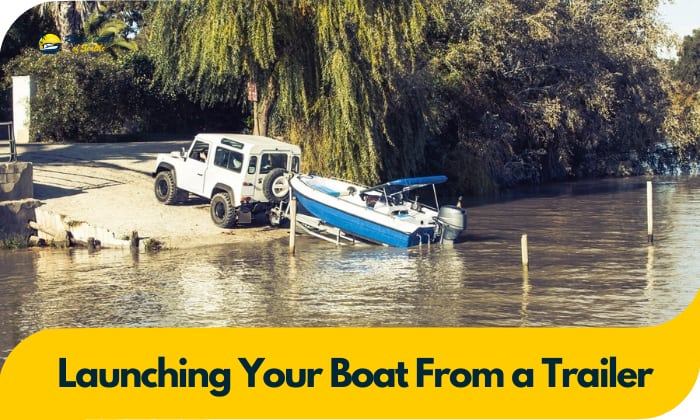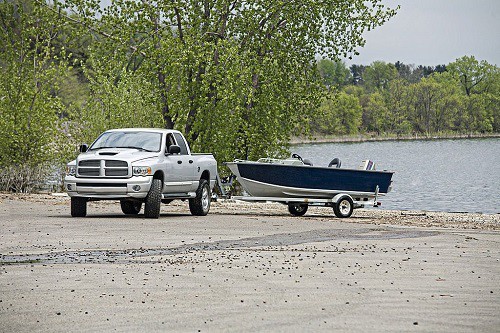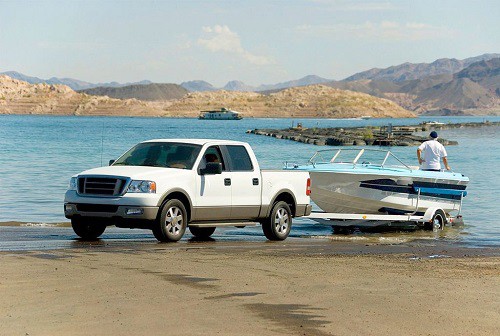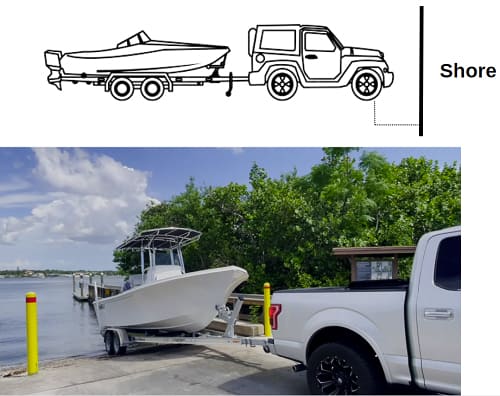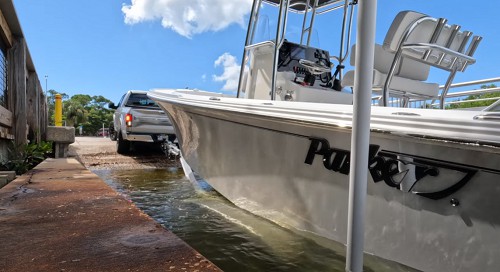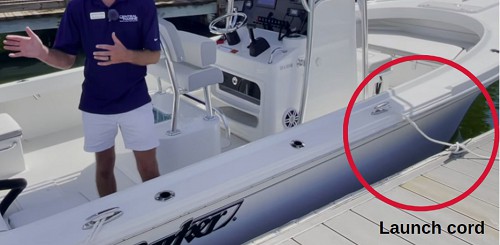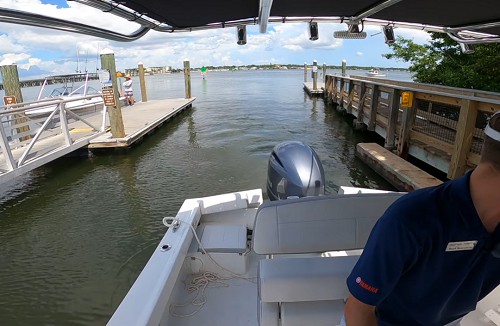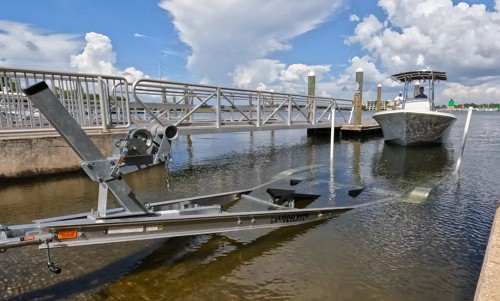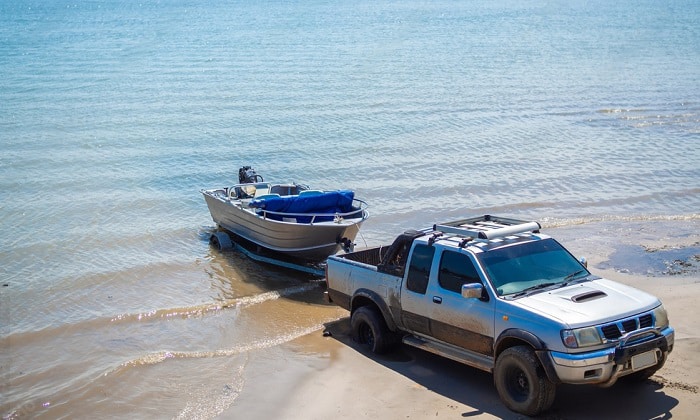Launching your boat from a trailer might seem daunting at first. However, it’s worth pointing out that setting off and retrieving your vessel are two of the most vital skills any boater must learn and master.
The process might seem intimidating for beginners. However, practice and the guidance of a seasoned boater can make this task become second nature.
We prepared this post to deepen and widen your understanding of watercraft launching from a trailer. Simply put, you’ll need to carefully back up the vehicle until the winch nearly touches the water, secure the boat with the launch cord, then back up the car again so the boat can float off the trailer.
Let’s start.
Table of Contents
Boat Launching Process
Launching a watercraft by yourself shouldn’t be more challenging than learning how to ride a bike. We outlined some critical steps to make the process less stressful so you can feel more confident about the experience.
Pre-launch Preparation
Unloading boat from trailer requires several preliminary activities to ensure the task proceeds as smoothly and safely as possible.
- Determine what you want to bring on your boating trip (i.e., fishing gear, coolers, baits, entertainment devices, and extra clothes). Load these items into the boat to avoid entering the water once launched.
- Check your boat trailer whether its lights are waterproof or submersible. If not, disconnect the fixtures from the tow vehicle to avoid short circuits.
- Gauge the fuel tank to make sure it’s full.
- Check the boat’s drain plug, ensuring it’s tight in the hole. Otherwise, you risk flooding the watercraft’s interior even before you start cruising.
- Look for mechanisms (i.e., tie-down straps, ropes, and winches) securing the vessel to the trailer. Remove or unfasten these cords, except the boat trailer winch line.
- Prepare a boat launch rope to help you put a boat in the water as safely as possible. You can make this item using a marine-grade rope that is 6 feet longer than your vessel, a carabiner hook, and a heavy-duty bungee cord. Alternatively, you can buy a launch rope from e-commerce sites.
- If you have an outboard motor, raise the engine to the highest possible angle before you back a boat into the water. Neglecting this precautionary measure might damage the propeller.
Note that these preparation steps should be done while you’re away from the ramp. Otherwise, you may get in the way of other boaters trying to launch their vessels as well.
Step-by-step Guide to Launching a Boat from a Trailer
Here are the steps for ensuring a successful and worry-free boat launching activity.
- Step 1. Assess the boat launching area.
Please don’t neglect this step, especially if this is your first time launching a watercraft. We recommend assessing the boat ramp for steepness or grade, including the boundaries of the concrete ramp. Are there obstacles or objects you must be wary of? Is the ramp slippery? How about the wind and water currents?
The boat ramp’s characteristics and prevailing water conditions will determine how far you can back up the boat trailer without undermining the watercraft and towing vehicle’s safety.
- Step 2. Position your vehicle and boat trailer.
Drive your towing vehicle and position it perpendicular to the shore. You can ask an assistant to ensure the boat trailer and towing vehicle are in a straight line. This maneuver will ensure you launch a pontoon boat or any watercraft into the water with ease.
- Step 3. Back up the boat trailer into the water, but only before submerging the winch.
Engage the towing vehicle’s gear to reverse and slowly back up toward the boat ramp landing. Please don’t rush to avoid turning the boat trailer needlessly. An assistant can issue commands or directions as you ease the car or truck into the ramp.
Ask your assistant to watch the trailer tongue and winch and tell you to stop reversing before these components touch the water. Apply the brakes, engage the parking brake, and shift the gear lever into “Park.” Position a wheel chock under the tire to keep the vehicle in place.
In case you don’t have an assistant, you can rely on your side and rear mirrors instead.
- Step 4. Secure the boat with the launch cord.
Get off your vehicle and tie the launch cord to a sturdy component on the boat. Secure the rope’s other end to the boat trailer’s winch strap. You can also ask your assistant to perform these steps while waiting behind the wheel.
If you’re launching a watercraft alone, you can secure the launch rope to a cleat on the dock. Please don’t forget this step to avoid letting the boat drift once launched.
Unfasten the boat trailer winch strap and hook to take a boat off a trailer easier.
- Step 5. Continue backing up until the watercraft floats.
Return to the towing vehicle, shift the gear to Reverse, and disengage the parking brake and wheel chock. Gently ease the boat trailer into the water. Ask the assistant to watch the watercraft’s rear end and tell when it starts to float. Apply the brakes once the vessel’s stern is floating on the water.
Shift the lever into Park and activate the towing vehicle’s parking or emergency brake.
- Step 6. Let the boat float or drive it in reverse.
You have two options for this step.
First, you can back up the towing vehicle deeper into the water without undermining its integrity to let the boat float (from bow to stern). This maneuver is ideal for a boat ramp with a gentle incline. Grab the boat launch cord and guide the watercraft out of the trailer. Secure the rope on a dock cleat.
Your second option is to have an assistant jump into the boat, crank the engine, and put the gear into Reverse. This technique eliminates the launch cord requirement, although you can still keep it to secure the boat to a cleat for anchoring post.
- Step 7. Drive the towing vehicle straight and park.
With the boat safely in the water, you can engage the gear lever to Drive and disengage the emergency brake. Maneuver your towing vehicle up the ramp and park it in a safe location (preferably a designated parking area).
You’re ready to put this boat trailer launch guide to the test.
Tips for a Successful Launch and Retrieval
Here are several boat launch tips to ensure your activity proceeds safely and smoothly.
- Troubleshooting Common Issues
- Boat trailer missing the ramp – Having a skilled assistant to guide you helps, allowing you to decide what should you do immediately.
- Unplugged drain – We mentioned this step is crucial before you drive the boat to the marina. Seasoned boaters always plug the watercraft drain before they roll out from their homes.
- Trailer alignment – As noted above, the boat and trailer and towing vehicle must be in a straight line. Otherwise, it’ll be next to impossible to properly launch the boat.
- Trailer Setup and Maintenance
- Always set up the trailer on firm and level ground.
- Ensure the back keel roller is lower by about 25 millimeters than the front keel roller.
- Assess the watercraft if its keel sits squarely in the middle of the boat trailer.
- Adjust the supporting side bunks to stabilize the boat on the trailer.
- Observe the correct maintenance schedules for boat trailer components (i.e., tire pressure, brake system, and connections).
Choosing the Right Boat Trailer
The best trailer allows you to launch and retrieve a boat safely and confidently. Here’s how to pick the right trailer for your boat:
- Measure the watercraft’s length from the drain plug/transom to the bow eye, including bow pulpits and swim platforms, to get the right boat trailer.
- Check the boat’s “wet” weight (not its dry weight) to determine the trailer weight capacity.
- Choose between a bunk and a roller trailer. Although bunk trailers are vulnerable to saltwater damage, they are affordable and easy to maintain. Meanwhile, roller trailers are ideal for low shallow boat ramps.
- Decide between galvanized steel and aluminum trailer frame. The former is heavy but effective in protecting lighting cables. Aluminum is lightweight and corrosion-resistant.
Conclusion
Launching your boat from a trailer shouldn’t be challenging or nerve-wracking, even for greenhorn boaters. Preliminary activities are essential in putting the watercraft into the water as safely and smoothly as possible.
Like any skill, practicing the different steps for launching vessels into bodies of water can build confidence while sharpening competencies. As for retrieving the boat from the water, you could always reverse the steps to bring home the watercraft.

Ten years of enjoying countless trips on boats never made me love them any less! So I am here to put all those experiences into good use for other boaters who want to have a safe and fun trip with their friends and families.

